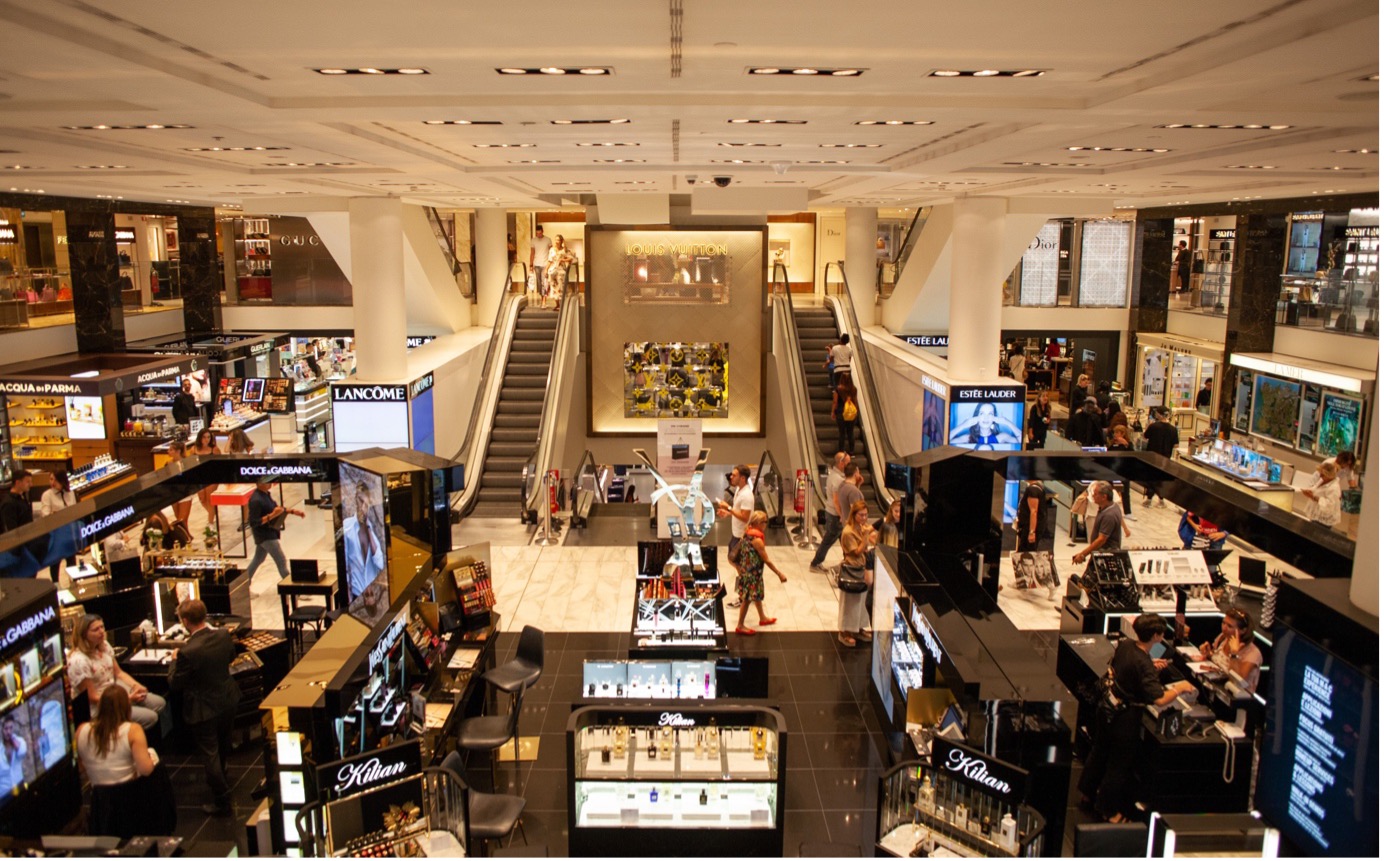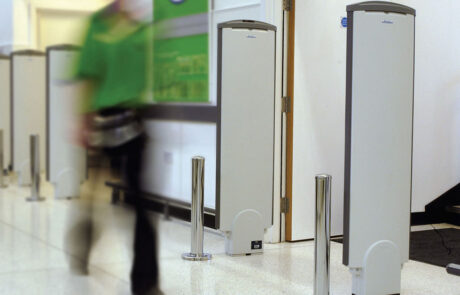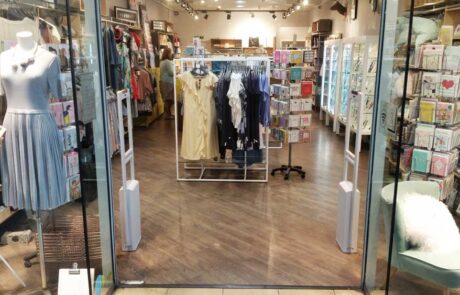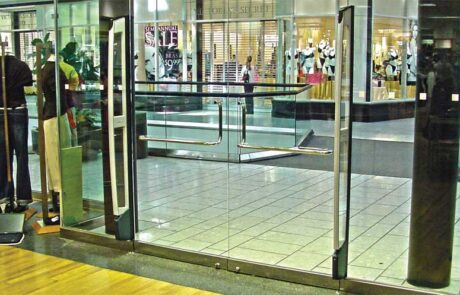
What are you doing to reduce shoplifting?
According to ONS, there was an 18% increase in shoplifting in UK stores compared to the end of June 2021 – this is equivalent to around 1.4 million offences. It is clear that shoplifting is still a big challenge in the UK, and with the cost-of-living crisis only set to boost costs in UK stores, the likelihood of shoplifting statistics rising again seems inevitable.
- Reducing shoplifting in a UK store requires a combination of strategies.
- Educating staff on what to look for and how to handle shoplifting is essential.
- Installing security cameras can also be a deterrent for shoplifters and can help catch criminals if they do steal.
- Utilising tags and alarms can help detect shoplifters and alert staff to their presence.
- Displaying signage that indicates the store has a zero-tolerance policy for shoplifting can also be helpful in deterring criminals.
- Offering rewards to customers who report shoplifting can help deter criminals and encourage customers to do their part in preventing
- Working with law enforcement can also be beneficial in catching and prosecuting shoplifters.
- Moving high-value items to the back of the store, out of sight and out of reach of potential shoplifters, can help reduce shoplifting.
By implementing these strategies, stores can significantly reduce shoplifting and protect their merchandise and customers.
5 ways to prevent shoplifting
As the owner of a UK store, it is important to take proactive steps to reduce shoplifting. One of the best ways to do this is to install security tags on items in your store. Security tags can help store owners monitor their items and can deter potential shoplifters. Additionally, hiring security guards can create a visible presence, which can help discourage shoplifters from stealing. Let’s take a look at 5 ways you can reduce shoplifting in 2023.
Learn how to spot a shoplifter
To reduce shoplifting in your store, it is important to be aware of the signs that a customer may be a potential shoplifter. One of the most common signs is when customers enter a store in large groups or are accompanied by minors. It is also important to watch out for customers who seem to be in a hurry or wearing bulky clothing, or carrying large bags. Additionally, keep an eye out for customers who are overly interested in security cameras and other anti-theft devices, hovering around the counter or cash register, constantly looking around or scanning the store, touching, or feeling merchandise, avoiding sales staff and shop assistants, switching items between bags or baskets, and paying for items with large denominations of cash.
Implement methods of prevention
The most visible measures are CCTV cameras and security tags. These help to deter shoplifters, as they know that they are being watched. Additionally, it is important to post and communicate a shoplifting policy to customers clearly, and to ensure that staff are adequately trained on how to handle suspected shoplifters.
To further discourage shoplifting, anti-theft tags can be placed on high-value items, and more likely-to-be-stolen items can be placed in secure display cases. A visible staff presence can also help to deter shoplifting, as can limiting the number of customers in the store at one time.
Use customer service to your advantage
Creating a strong customer service team is an effective way to prevent shoplifting in any UK store. This team should be trained and knowledgeable about shoplifting prevention, store policies, and customer relations. By providing customers with an understanding and respectful customer service experience, this team can help customers feel welcomed and secure in the store.
Customer service should also be used proactively to identify potential shoplifters. This can be done by observing customer body language, monitoring customer behaviour, and looking out for suspicious activity. Customers can also be educated about shoplifting prevention and store policies to ensure they understand the consequences of shoplifting and the store’s zero-tolerance policy. The store should also encourage customers to report any suspicious activity they observe to the customer service staff or store management.
Optimise your store layout
One of the most effective ways to discourage shoplifting is to rearrange product displays in a way that makes shoplifting difficult. This might include placing items in high-traffic areas or near store exits or storing expensive items behind the counter or in locked cases. Mirrors can also be placed around the store so that employees can easily see all parts of the store, and security cameras can be installed in all parts of the store to deter shoplifting.
Identify your at-risk items
To get started, retailers should analyse sales data to identify which items are at risk of being stolen. This data can then be used to inform which security measures should be implemented to protect these items. Utilising in-store technology such as surveillance cameras and EAS systems can be an effective way to deter shoplifters.
What do shoplifters typically target?
As a retailer in the UK, shoplifting is a major concern. It can be a costly problem as well as a safety hazard, so it’s important to take steps to reduce shoplifting in your store. Here are some items that are especially prone to shoplifting and what you can do to reduce the risk:
- High-value items - electronics, jewellery, and designer clothing should be kept in a secure display or behind the counter. Use security tags or sensors on these items and make sure that staff are monitoring the area. You could also consider using CCTV cameras and warning signs to deter potential thieves.
- Food items - confectionery, meat, and alcohol should be kept close to the tills. This will enable you to keep an eye on them, and customers will be less likely to try and steal them. Make sure to use secure packaging and keep the stock organised.
- Cosmetics and fragrances - keep them away from the entrance of your store. Place them in a secure display close to the tills and consider using security tags.
- Books and DVDs - keep them out of reach on shelves or behind the counter. Consider using security tags on these items and make sure staff are monitoring the area.
- Small items - batteries, lighters, and stationery should be kept behind the counter and out of reach of customers. Use security tags and keep the stock organised and secure.
Finally, everyday items such as razors and razor blades should be kept behind the counter and away from the entrance of the store. This will make it harder for shoplifters to access them, and security tags or sensors can be used to deter potential thieves further.
By taking the necessary steps to reduce shoplifting, you can protect your store from loss and create a safer environment for your customers and staff.
This may also interest you:
A challenging year ahead: Retail Recession of 2023
Reduce shoplifting when you work with JKI Distribution
Shoplifting is a growing problem for retailers in the UK, costing the industry millions of pounds in lost revenue and reduced profits. It not only affects businesses but also hurts the community by creating an unsafe environment for customers and employees. Fortunately, there are a number of effective strategies that store owners can use to reduce shoplifting in their stores.
At JKI Distribution, we pride ourselves on working with stores throughout the UK to reduce their shoplifting concerns. As your reliable security tagging system installer and service provider, we are an approved and accredited business partner of Sensomatic Retail Solutions. Our wide range of tags and alarm systems support a variety of independent and chain retail stores and ultimately help to improve your bottom line and deter thieves from making off with your products. If you are looking for support to reduce your shoplifting statistics, get in touch with JKI Distribution today.




